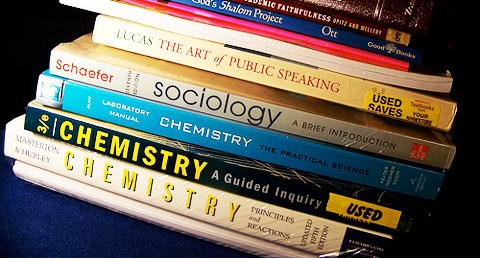COMPUTER SCIENCE ICT SSS2 SECOND TERM
Subject Scheme & Timeline:
Please check through the topics down and be sure it conform with the scheme you are using.
Computer Science ICT SSS2 Second TermWEEK 1COMPUTER DATA CONVERSIONPerformance ObjectivesStudents should be able to: Explain the meaning of Register Explain the meaning of the Address ContentRegisterThis is a special high-speed storage area within the CPU. All data must be represented in a register before it can be processed, for example, if two numbers are to be multiplied, both numbers must be in registers, and the result must be placed in a register. (The register can contain the address of a memory location where data is stored rather than the actual data itself.)AddressAn address is used to reference a storage location in the main memory. You can think of computer memory as an array of storage boxes, each of them has an address (a unique number) assigned to it.
Computer Science ICT SSS2 Second TermWEEK 2CONCEPT OF COMPUTER FILESPerformance ObjectivesStudents should be able to: Explain the meaning of Computer Files List types of data itemsContentComputer files: Computer files are the most basic unit of data that users can store on a disk. Every program, image, video, song employee number, a 3-digit, and document is stored as a fileRecord: A record is a collection of related data items or fields. Each record normally corresponds to a specific unit of information. For example, employee number, employee’s name, basic salary and house rent allowance.Field: Data items are physically arranged as fields in a computer file. Their length may be fixed or variable. Since all individuals have 3 digits field is required to store the particular data. Hence, it is a fixed field. In contrast, since the customer’s name varies considerably from one customer to another, a variable amount of space must be available to store this element. This can be called a variable field.
Computer Science ICT SSS2 Second TermWEEK 3HANDLING COMPUTER FILESPerformance ObjectivesStudents should be able to: Explain the basic operations of computer filesContentBASIC OPERATIONS OF COMPUTER FILES:Create: Create a file with a given name.Delete: Deleting a file that is unwanted.Retrieve: Retrieve a stored file or lost file.Copy: Copying a created file to either an external or in-built storage device.View: Viewing a created file or granting the privilege of viewing.Open: Opening a file to use its contents.
Computer Science ICT SSS2 Second TermWEEK 4WORD PROCESSING 2Performance ObjectivesStudents should be able to: Explain the meaning of word processingContentWhat is word processing?Word processing is the use of computer software to create, edit. View, store, retrieve and print text documents. A text document is a written communication like letters reports, memos and so on. The software that is used for word processing is called a word processor.Examples of word processorsMicrosoft wordWordStarWordPerfectWord pro
Computer Science ICT SSS2 Second TermWEEK 5SYSTEM DEVELOPMENT CYCLE 1Performance ObjectivesStudents should be able to: Explain the meaning of System life circleContentINTRODUCTIONInformation systems are important for the success of any modern business or organization. Many information systems are being developed to make them more competitive and improve productivity and profit.
Computer Science ICT SSS2 Second TermWEEK 6SYSTEM DEVELOPMENT CYCLE 2Performance ObjectivesStudents should be able to: Explain the meaning of system life circleContentSystems Development Life Cycle (SDLC)Systems development is a planned undertaking with a fixed beginning and end that produces the desired result or product. It may be a large job that involves many people working for a long period or it can also be a small assignment that one person can finish in a day. The SDLC PROVIDES AN OVERALL FORMALISED METHOD FOR managing the systems development processes and activities. It represents a detailed and specific set of procedures, steps, and documents that are required for the development of an information system development.
Computer Science ICT SSS2 Second TermWEEK 7PROGRAM DEVELOPMENTPerformance ObjectivesStudents should be able to: Explain the meaning of program developmentContentDefinition of a ProgramA computer program can be defined as a list of instructions issued to the computer to perform a particular task. Programs are written in computer programming languages.
Computer Science ICT SSS2 Second TermWEEK 8ALGORITHMS AND FLOWCHARTSPerformance ObjectivesStudents should be able to: Explain the concepts of algorithms and flowchartsContentAlgorithm is the step-by-step procedure of solving a particular problem. It is simply a sequence of clear and precise instructions for solving a particular problem. Algorithms are usually written in English and some few mathematical notations (signs, symbols)
Computer Science ICT SSS2 Second TermWEEK 9INTRODUCTION TO BASIC PROGRAMMINGPerformance ObjectivesStudents should be able to: Understand what is basic programmingBASIC stands for BEGINNERS ALL-PURPOSE SYMBOLIC INSTRUCTION CODE. It is a single easy-to-use language designed also for beginners. It is not only simple but also powerful. It is science-oriented. Professor John Kemeny and Thomas Kurtz developed the language in 1964 at Dartmouth College, U.S.A., as a means of teaching students a simple language for programming a computer. The program can be used to solve problems covering a wide range of applications on many different types of digital computers. Because the BASIC Language has been designed for ease of use and is readily available on most computers, program development can be achieved in a minimum time.

